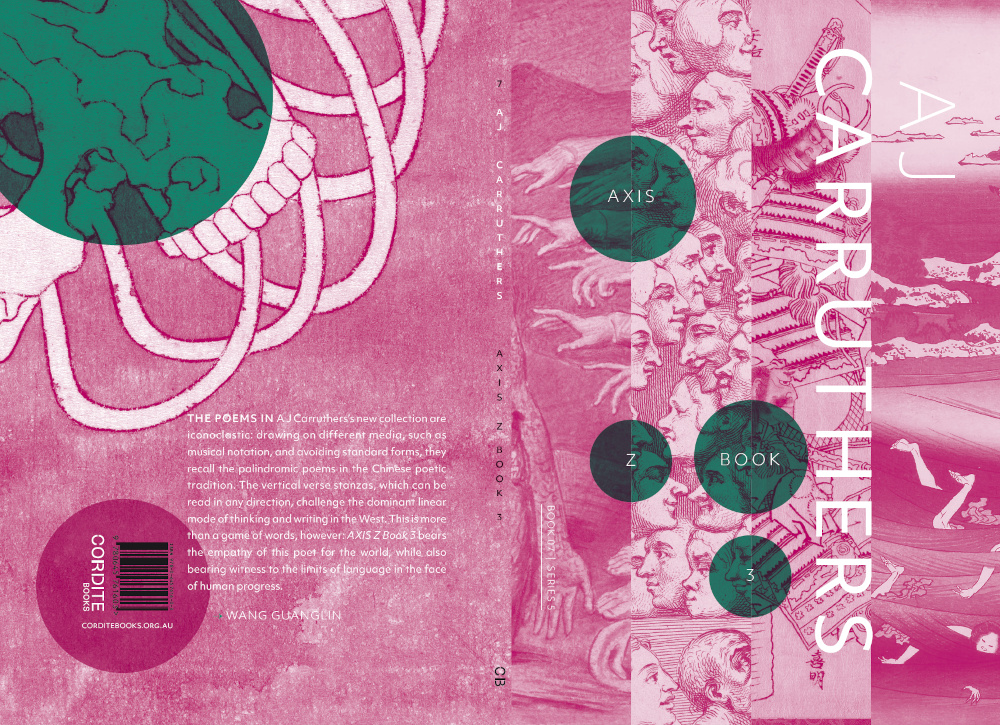
In a j carruthers’s new collection, verse stanzas, running vertically from top to bottom rather than left to right, challenge the dominant linear mode of thinking and writing in the West. They call attention to alternative forms of representation and reveal the existence of other landscapes. The purpose of the ‘axis’ is no longer confined to one-way movement, but to rotation and circular modes of thinking, writing, and generating new ideas.
The poems here are iconoclastic: they draw on different media (such as musical notation) and languages, and avoid standard lyrical and stylistic forms. They can be read non-sequentially, and in open-ended ways that invite the reader’s participation. The poet’s defamiliarising techniques create a certain degree of difficulty and slow the progress of perception. Reading in this case is never easy or smooth, but an exercise in aesthetic entertainment and critical thinking.
carruthers’s poems also remind me of the palindromic poems in the Chinese poetic tradition, especially those by Su Hui, in pre–Qin Dynasty China. Su Hui wove a ‘reversible circular-picture poem’ for her husband Dou Tao, who had been exiled to the place of ‘flowing sands’. This mournful poem of love’s longing consists of 840 characters and can be read horizontally, vertically, backwards, forwards – in any direction – to make over 200 other poems, and won the admiration of the Empress Wu Zetian.
AXIS Z Book 3 displays an alter–avant-garde modernism: the poems continue, on the one hand, the tradition of modernism (recalling something of e. e. cummings or Ezra Pound); and, on the other, the heritage of marginal writers and writings neglected in Eurocentric modernist studies. This is more than a game of words: the poems are, the poet states, ‘written in an environment of a great imbalance of worlds, which produces war’. Just as the poetry of Su Hui bears her love for her husband, AXIS Z Book 3 bears the empathy of this poet for the world, while also bearing witness to the limits of language in the face of human progress.













